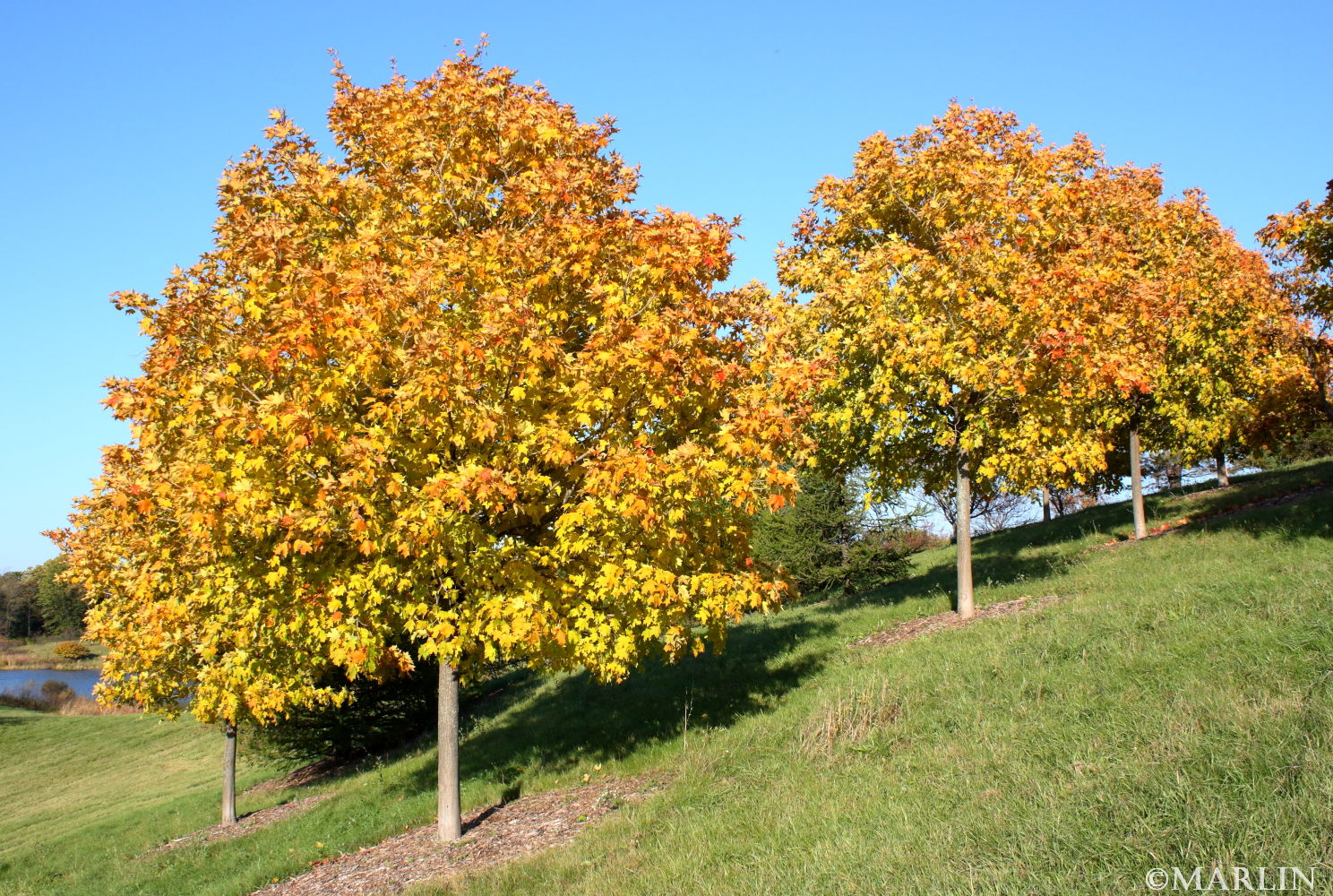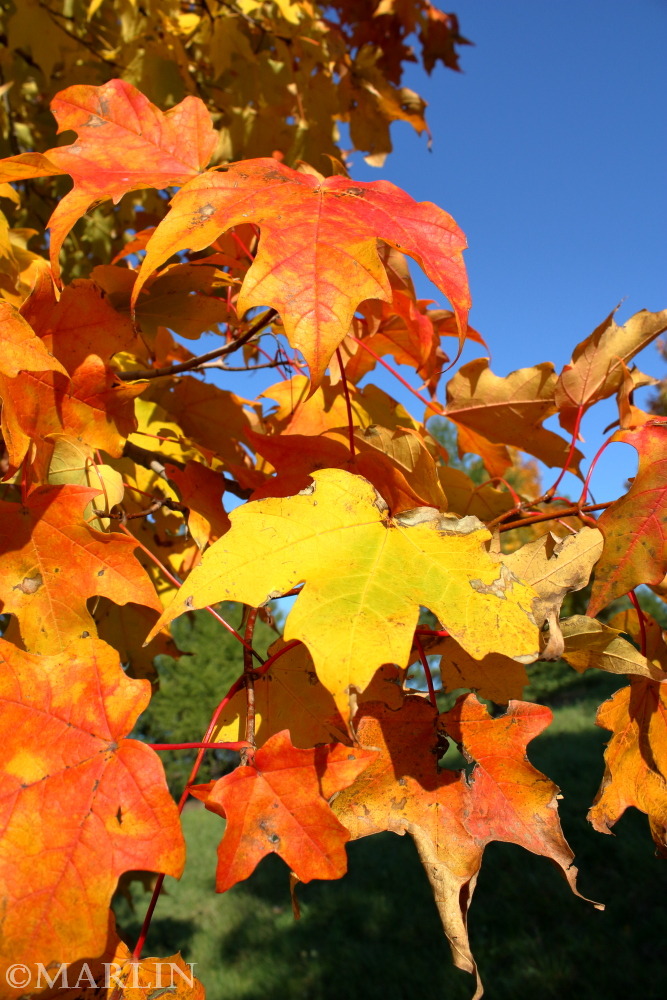Sugar Maple – Acer saccharum ‘Green Mountain’
Sugar maple, sometimes called hard maple or rock maple, is one of the largest and more important of our hardwoods. It grows on approximately 31 million acres, or 9 percent of the hardwood forests in Midwest and northeast North America. The greatest commercial saw timber volumes are presently in Michigan, New York, Maine, Wisconsin, and Pennsylvania. In most regions, both the saw timber and growing stock volumes are increasing, with increased production of saw logs, pulpwood, and more recently, firewood.
The fruit of the sugar maple, called a samara, is a double-winged, papery seed-bearing fruit, commonly called a “helicopter” or “whirlybird.” The aerodynamic properties allow the seeds to be dispersed more than 100 meters (330 feet) from the parent tree.
There are seven 16-year-old Green Mountain sugar maples on the hill overlooking Crabapple Lake at the Morton Arboretum. It is quite a sight – the whole hillside is yellow and orange! Height: to 50′ / USDA hardiness zones: 3 through 8A / Grows 10 feet per year in ideal conditions
The dense, highly branched crown creates dense shade and will prevent good lawn growth. Branches are usually well-attached to trunks resulting in a low branch failure rate. The main ornamental feature of the tree is the brilliant red, yellow, or orange fall color that develops in the cooler part of its range. The yellows are more prominent in the south. The tree transplants fairly easily but may develop girdling roots which can reduce growth, or in extreme cases kill the tree.
Growing in full sun or shade, Sugar Maple will tolerate a wide variety of soil types (except compacted soil) but is not salt-tolerant. Established trees look better when given some irrigation during dry weather, particularly in the south. In the south, many leaves remain in the central portion of the canopy for much of the winter, giving the tree a somewhat unkempt appearance.
Sensitivity to compaction, heat, drought and road salt limit usage of Sugar Maple for urban street plantings, but it is still recommended for parks and other areas away from roads where soil is loose and well-drained. Black Maple, a similar species, is more tolerant of heat and drought.
References
1. Edward F. Gilman and Dennis G. Watson, USDA Forest Service, Acer saccharum Green Mountain
2. Morton Arboretum accessions 73-94*1 thru 7, photographed October 19, 2009 by Bruce Marlin
Family Aceraceae – Maples
The Maples are some of our most familiar and beloved trees. Most are native to the far east: China, Japan, Korea, Manchuria. Maples produce a distinctive winged fruit called a samara, also commonly known as helicopters or whirlybirds.
Tree Encyclopedia | Tree Index | Maple Index | Elms & Zelkovas


